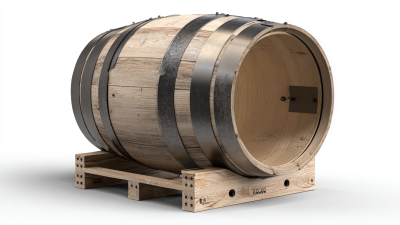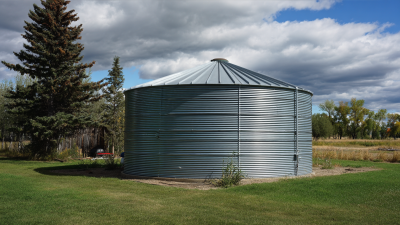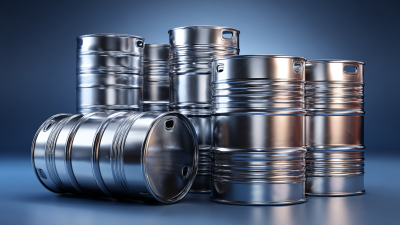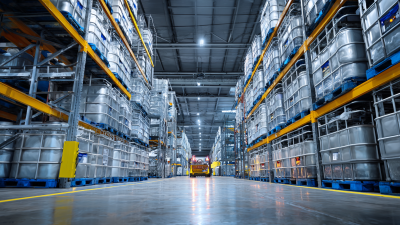Top 10 Benefits of Using Stainless Tanks for Your Storage Needs
In the ever-evolving landscape of storage solutions, the implementation of stainless tanks has emerged as a pivotal choice for industries ranging from food and beverage to chemicals and pharmaceuticals. According to a report by Grand View Research, the global stainless steel tank market is projected to reach USD 10.4 billion by 2025, with a compound annual growth rate (CAGR) of 5.5%. This upward trend highlights the increasing recognition of stainless tanks' durability and versatility in various applications.
 Stainless tanks not only offer unparalleled resistance to corrosion and staining but also maintain the integrity of stored products, ensuring quality and safety. A recent study by MarketsandMarkets indicates that the demand for stainless steel tanks is driven by their long life span and reduced maintenance costs, which make them a cost-effective choice for businesses. As companies strive for operational efficiency and sustainability, investing in stainless tanks can provide a significant advantage by enhancing storage capabilities while minimizing environmental impact.
Stainless tanks not only offer unparalleled resistance to corrosion and staining but also maintain the integrity of stored products, ensuring quality and safety. A recent study by MarketsandMarkets indicates that the demand for stainless steel tanks is driven by their long life span and reduced maintenance costs, which make them a cost-effective choice for businesses. As companies strive for operational efficiency and sustainability, investing in stainless tanks can provide a significant advantage by enhancing storage capabilities while minimizing environmental impact.
Furthermore, the shift toward greater food safety regulations and stringent chemical storage standards amplifies the need for reliable storage solutions. With their ability to withstand extreme temperatures and pressures, stainless tanks are becoming increasingly vital. This article will delve into the top 10 benefits of using stainless tanks for storage, illustrating why they are an essential investment in today's industrial landscape.
Advantages of Stainless Tanks Over Other Storage Options
 Stainless tanks have become a preferred choice for many industries due to their numerous advantages over traditional storage options. One of the primary benefits is their exceptional resistance to corrosion and rust. Unlike other materials such as plastic or carbon steel, stainless steel is less susceptible to environmental factors and chemicals, making it ideal for storing various substances, including food, chemicals, and pharmaceuticals. This durability not only extends the life of the tanks but also ensures that the contents remain uncontaminated and safe for use.
Stainless tanks have become a preferred choice for many industries due to their numerous advantages over traditional storage options. One of the primary benefits is their exceptional resistance to corrosion and rust. Unlike other materials such as plastic or carbon steel, stainless steel is less susceptible to environmental factors and chemicals, making it ideal for storing various substances, including food, chemicals, and pharmaceuticals. This durability not only extends the life of the tanks but also ensures that the contents remain uncontaminated and safe for use.
Moreover, stainless tanks offer superior strength and durability, allowing them to withstand high-pressure conditions and extreme temperatures. This resilience makes them suitable for both indoor and outdoor applications, reducing the risk of structural failure over time. Additionally, stainless steel's non-porous surface makes it easier to clean and sanitize, which is crucial in industries where hygiene is a priority. With their ability to maintain integrity and performance under challenging conditions, stainless tanks stand out as a more reliable storage solution compared to their counterparts.
Key Features of Stainless Steel That Enhance Durability
Stainless steel is renowned for its exceptional durability and resistance to various environmental factors, making it an ideal choice for storage tanks. One of the key features that enhance the durability of stainless steel is its ability to withstand corrosion. Unlike other materials, stainless steel forms a protective layer of chromium oxide that prevents rust and deterioration, even in harsh conditions. This characteristic is particularly beneficial for storage applications that involve exposure to moisture and chemicals, ensuring a long lifespan for the tanks.
Additionally, stainless steel is highly resistant to impact and thermal stress, which adds to its resilience in various storage environments. Its strength allows it to handle heavy loads without the risk of cracking or deforming. Furthermore, stainless steel tanks are easy to clean and maintain, which is crucial for industries where hygiene is a priority. The non-porous surface of stainless steel helps to prevent the buildup of bacteria and contaminants, making it a safe option for storing food and beverages. These qualities not only enhance the durability of the tanks but also provide peace of mind for users in demanding storage scenarios.
Top 10 Benefits of Using Stainless Tanks for Your Storage Needs
| Benefit |
Description |
Key Feature |
Durability Aspect |
| Corrosion Resistance |
Stainless steel resists rust and corrosion, extending tank life. |
Chromium content |
High resistance to atmospheric and chemical corrosion. |
| Low Maintenance |
Requires less frequent cleaning and upkeep compared to other materials. |
Smooth surface finish |
Minimized build-up of contaminants. |
| Temperature Resistance |
Maintains structural integrity in extreme temperatures. |
High tensile strength |
Withstands thermal expansion without warping. |
| Recyclable |
Stainless steel is 100% recyclable, making it environmentally friendly. |
Life cycle sustainability |
Contributes to reducing waste in landfills. |
| Aesthetic Appeal |
Shiny and professional appearance enhances visual appeal. |
Polished finish |
Retains visual quality over time. |
| Strength |
High strength-to-weight ratio allows for robust designs. |
Alloying elements |
Provides enhanced tensile strength. |
| Non-Toxic |
Safe for food and beverage storage without leaching harmful substances. |
Food-grade quality |
Meets health and safety standards. |
| Versatile Applications |
Suitable for various industries including food, beverage, and chemicals. |
Customizable designs |
Adaptable for different used cases. |
| Impact Resistance |
Can withstand rough handling and impacts. |
Ductility |
Reduces risk of cracks and breaks. |
| Cost-Effective Longevity |
Initial higher investment offset by lower maintenance and replacement costs. |
Long service life |
Reduces total cost of ownership over time. |
How Stainless Tanks Improve Hygiene and Safety Standards
Stainless steel tanks are increasingly becoming the preferred solution for various storage needs, primarily due to their remarkable hygiene and safety standards. According to a report by the International Stainless Steel Forum, over 70% of food and beverage manufacturers have adopted stainless steel for their storage systems, recognizing its non-porous nature that prevents bacteria growth and contamination. Unlike other materials, stainless steel is resistant to corrosion and does not leach harmful substances, ensuring safe storage for consumables. This characteristic is critical in industries such as pharmaceuticals, where maintaining products in a contamination-free environment is essential.
Additionally, stainless steel tanks meet stringent regulatory standards set by organizations like the FDA and the USDA. These bodies have established guidelines indicating that stainless steel is the ideal material for storage activities in food safety applications. Research by the Food Marketing Institute highlights that 48% of consumers prioritize food safety, prompting facilities to invest in materials that enhance product integrity. The high durability of stainless steel not only prolongs the lifecycle of storage tanks but also minimizes the risk of leaks or spills, thereby protecting both the product and the environment.
Energy Efficiency and Cost Savings from Using Stainless Tanks
Energy efficiency is a significant advantage of using
stainless steel tanks for storage. According to a report by the
Renewable Energy Association, stainless steel is highly durable, which means it
requires less energy to produce and maintain compared to other materials. This longevity translates to lower energy
consumption over the life cycle of the tank, providing an opportunity for businesses to reduce their carbon footprint while also conserving resources.
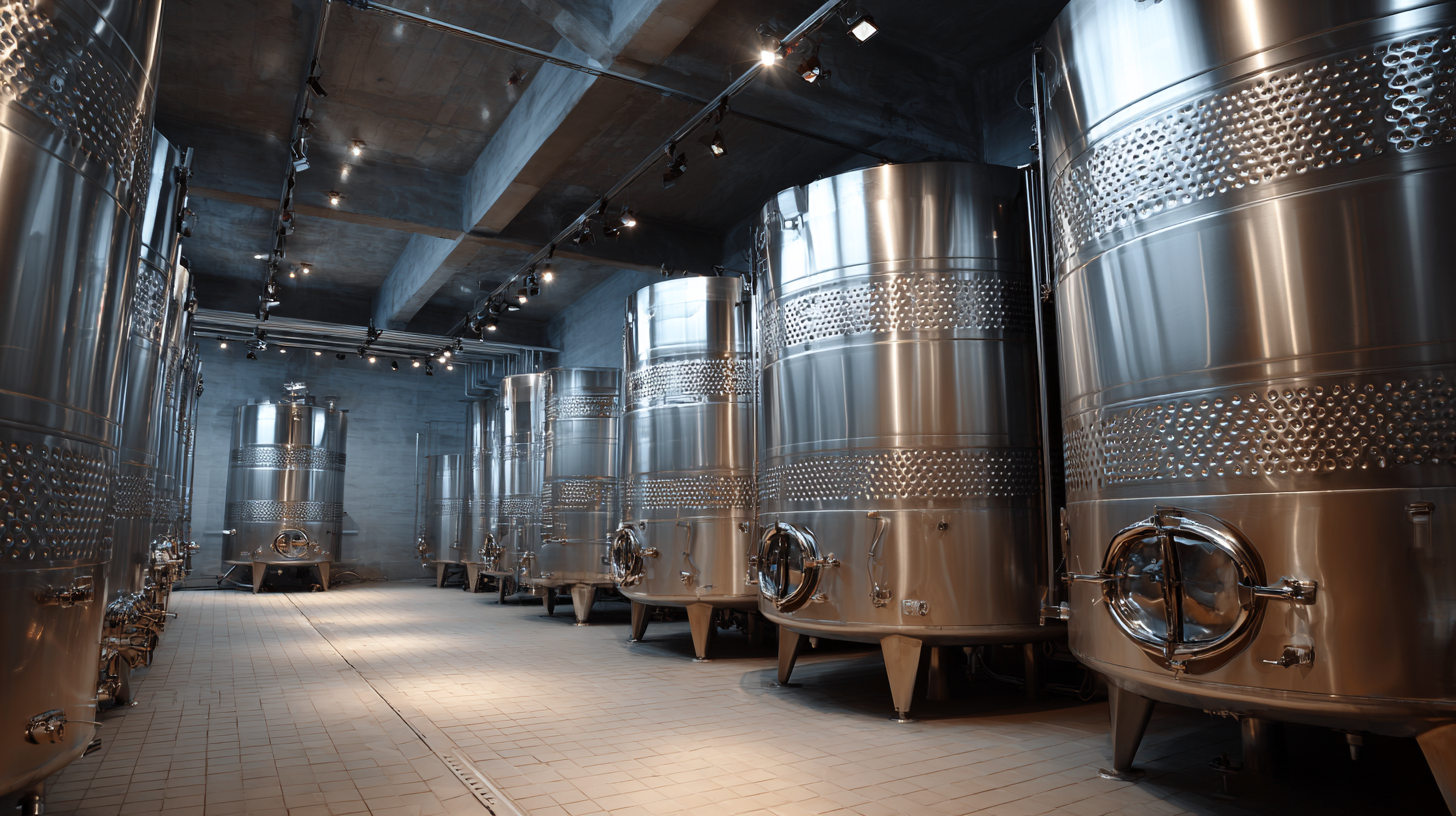
Cost savings are another critical benefit of utilizing stainless tanks. Research
from the International Energy Agency highlights that businesses can save up
to 30% on maintenance costs due to the corrosion resistance
and low upkeep requirements of stainless steel. Additionally, the initial investment may yield long-term financial
benefits, with stainless tanks often outlasting their competition, resulting in fewer replacements and associated
costs. The combination of energy efficiency and reduced
operational costs positions stainless steel tanks as a smart choice for businesses aiming to optimize their storage solutions.
Versatile Applications of Stainless Tanks in Various Industries
Stainless steel tanks are becoming increasingly vital across diverse industries due to their versatile applications and numerous benefits. In the food and beverage sector, for instance, stainless steel tanks are essential for storing liquids such as wine, beer, and juices. According to a report by Market Research Future, the global food and beverage processing equipment market is expected to reach $50 billion by 2026, with stainless steel equipment playing a pivotal role due to its corrosion resistance and hygienic properties. These tanks not only enhance the quality of storage but also ensure compliance with stringent health regulations.
In the pharmaceutical industry, stainless steel tanks are favored for their ability to maintain stringent cleanliness standards. The Global Pharmaceutical Stainless Steel Equipment Market is projected to grow at a CAGR of 6.3% through 2025, reflecting a strong demand for high-quality storage solutions. The non-reactive nature of stainless steel protects sensitive products from contamination, which is critical for products like vaccines and sterile solutions. Furthermore, their durability reduces the risk of leaks and ensures a longer lifecycle compared to other materials, ultimately saving costs in the long run.
Top 10 Benefits of Using Stainless Tanks for Your Storage Needs
This chart illustrates the top 10 benefits of using stainless tanks across various industries, showcasing their significance in terms of durability, corrosion resistance, and hygiene among other advantages. Each benefit represents a critical aspect influencing the choice of stainless tanks for storage solutions.






 Stainless tanks not only offer unparalleled resistance to corrosion and staining but also maintain the integrity of stored products, ensuring quality and safety. A recent study by MarketsandMarkets indicates that the demand for stainless steel tanks is driven by their
Stainless tanks not only offer unparalleled resistance to corrosion and staining but also maintain the integrity of stored products, ensuring quality and safety. A recent study by MarketsandMarkets indicates that the demand for stainless steel tanks is driven by their 

